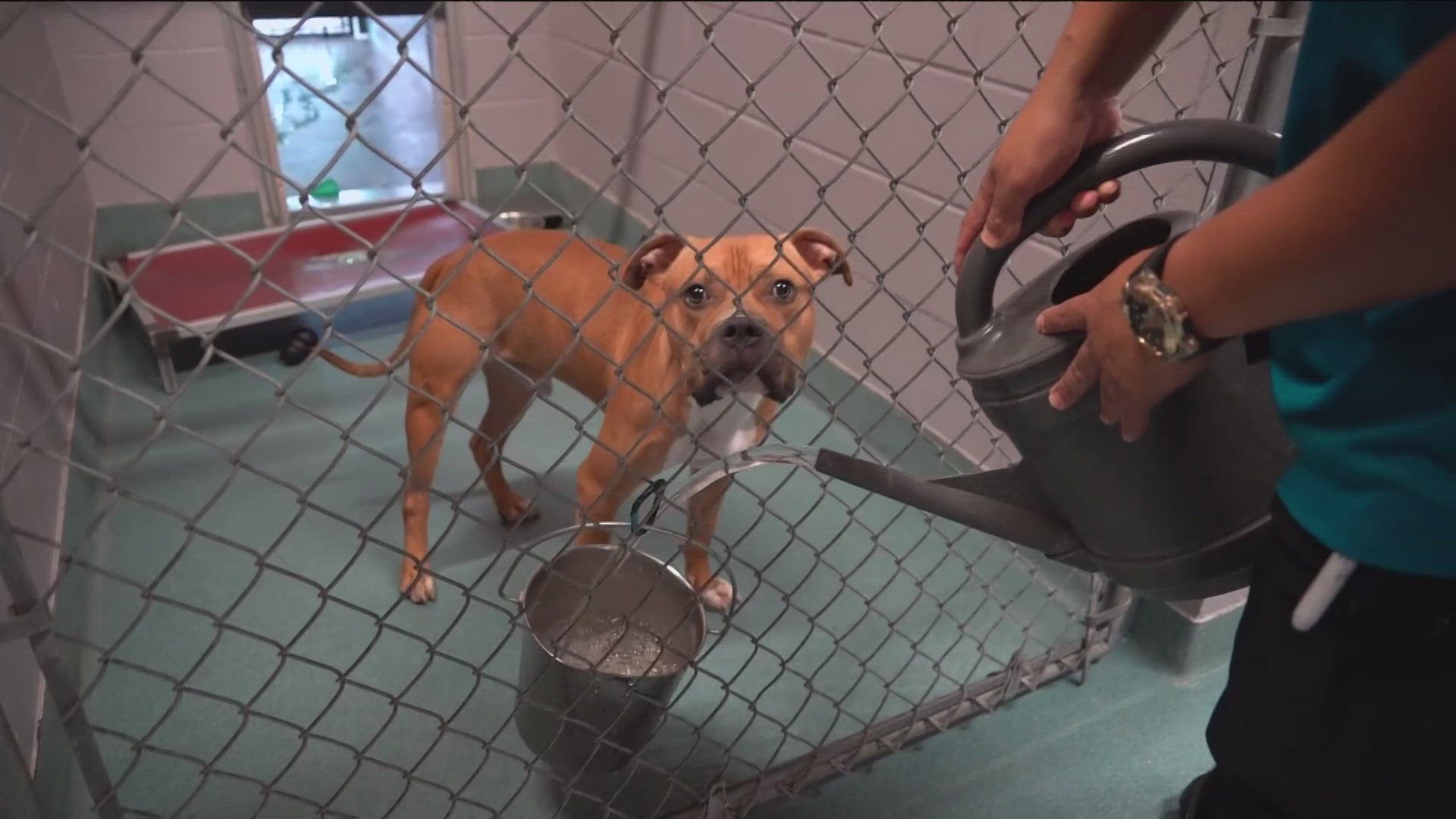SAN MARCOS, Texas — The San Marcos Regional Animal Shelter is set to hand over regional responsibility to Hays County and focus on operating its own local shelter starting in late 2026.
The shelter has been overcapacity for years.
"We do everything we can to keep it at bay and keep animals in a proper environment. It's just been tough lately," said Derryann Krupinsky, the city of San Marcos assistant director of Neighborhood #nhancement.
She said on average, the shelter is 30 to 50 kennels over capacity. On Aug. 20, the city council voted on a resolution to change that.
The resolution reads: “The San Marcos Animal Services Division currently operates and maintains a regional animal shelter, but intends to transfer regional responsibilities to Hays County at the end of this agreement term and operate a local animal shelter for the city of San Marcos only.”
"If anybody from the county is listening, it's time to get a move on because we can't keep doing what we've been doing anymore where we are taking the brunt of everything that's going on," San Marcos Mayor Jane Hughson said during the city council meeting.
Under an interlocal agreement, San Marcos has operated the shelter for Hays County, including taking pets from the city of Kyle and Buda, since 2008. That agreement will end in late 2026, according to documents.
Krupinsky said about 50% of the animals that come to the shelter are from the city of San Marcos. With Hays County one of the fastest growing counties in the country, Krupinsky said they can not keep up. She said this change will help alleviate the issue.
"In theory, when the city of San Marcos is only housing its own animals, the population should be that much more manageable," Krupinsky said.
In March 2023, Hays County announced it is building its own pet resource center, which includes a shelter. At that time, staff told KVUE it should be completed by 2026.
Krupinsky said in the meantime, they encourage residents to spay and neuter pets and keep up with medical needs so the shelter can continue to give these cuties the care they need.
RELATED:

